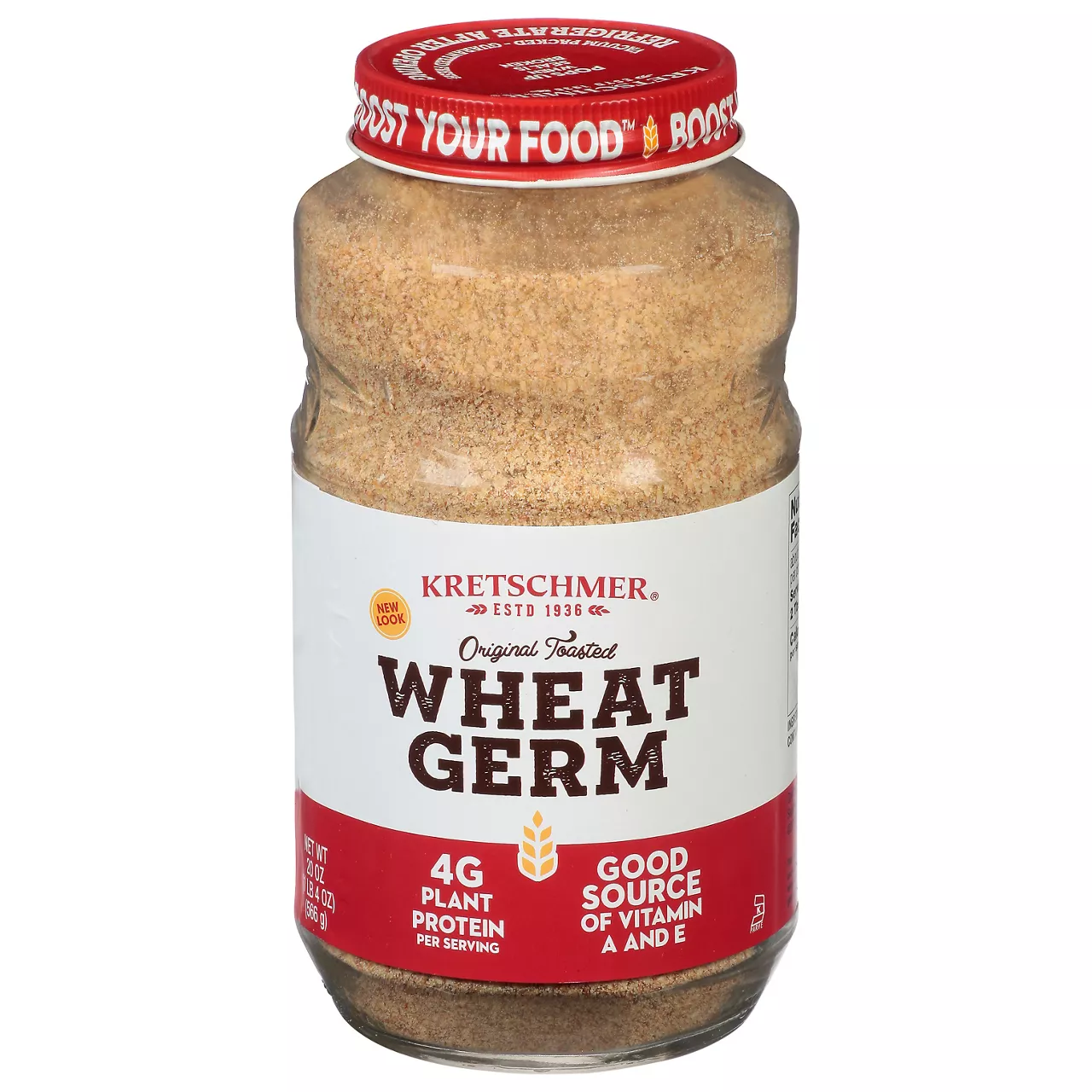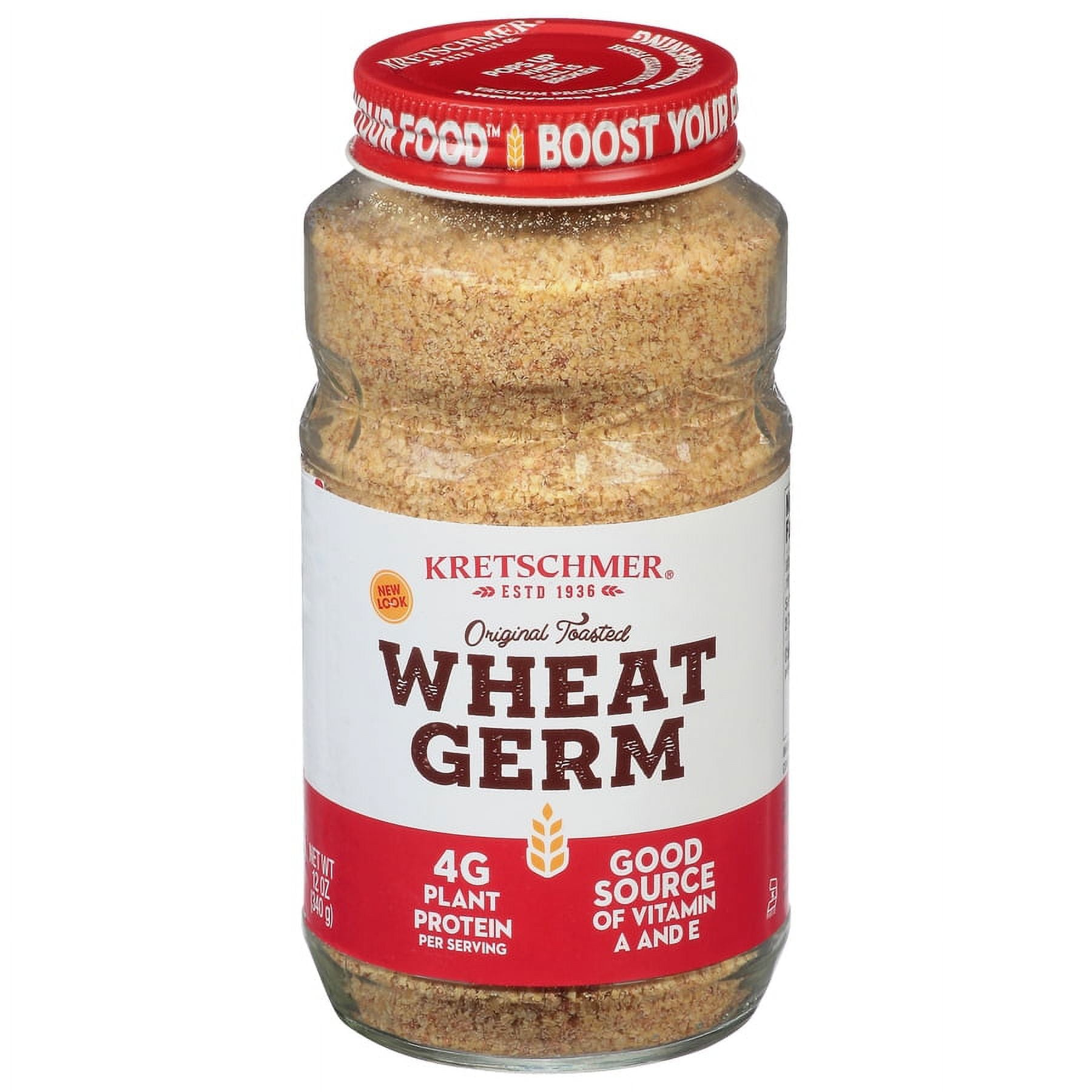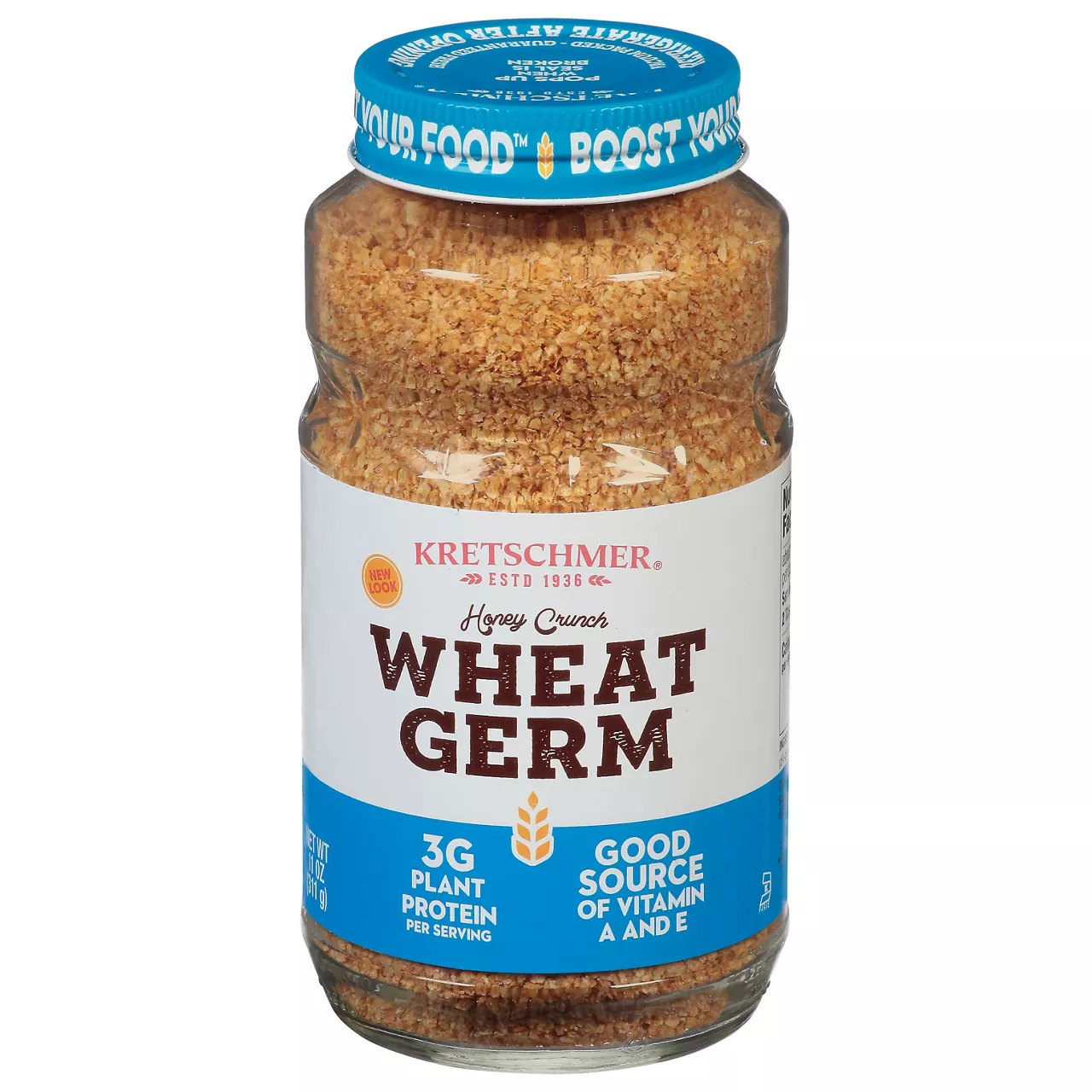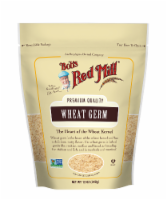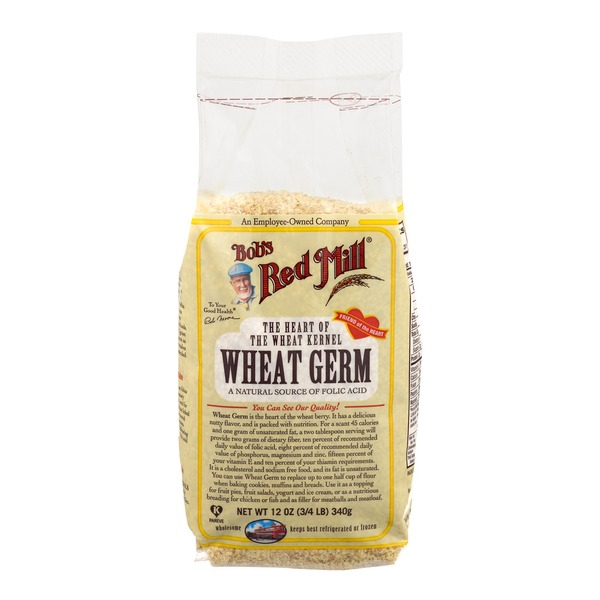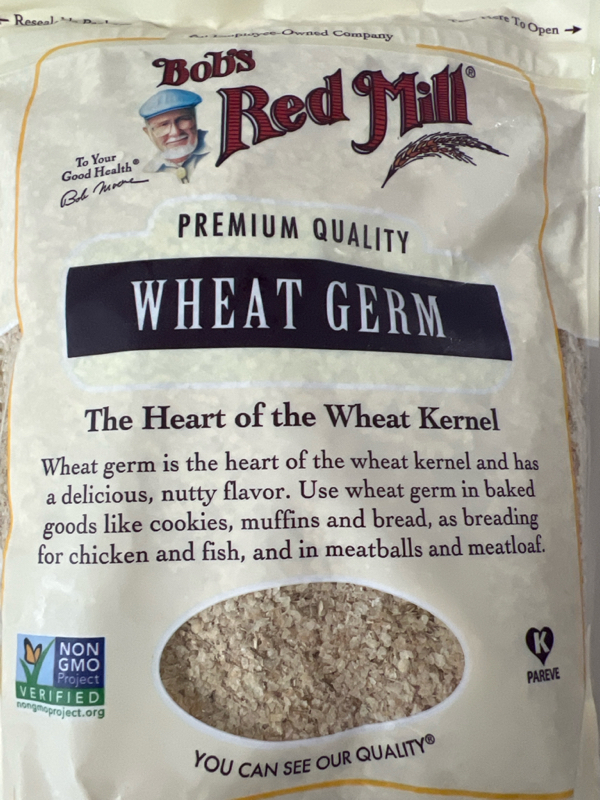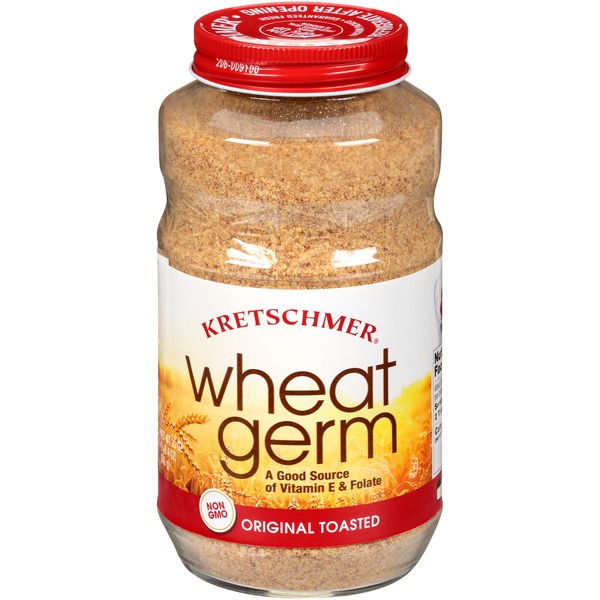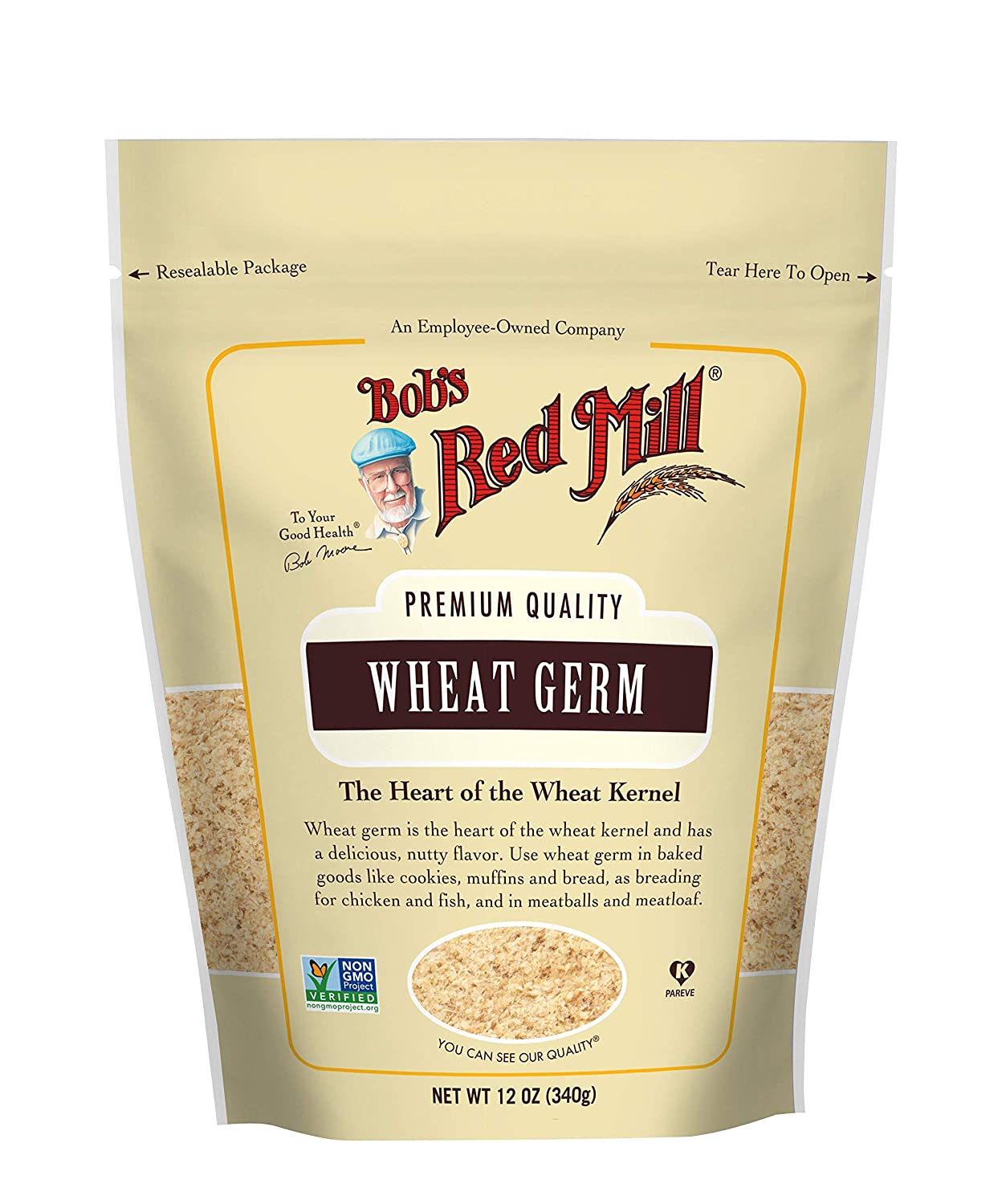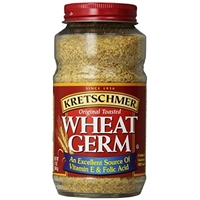BREAKFAST AND BRUNCH
BREADS
SNACKS
Wheat Germ
Wheat germ is the small, nutrient-rich center of a wheat kernel, comprising only about 2.5% of the kernel's weight. It is packed with essential nutrients such as thiamin, riboflavin, vitamin B6, niacin, zinc, phosphorus and antioxidants, making it a valuable addition to a healthy diet. Its unique nutty flavor and nutritional value contribute to its use in various recipes, from smoothies to baked goods.
For home cooks and consumers, wheat germ can be easily incorporated into their everyday meals. It can be used as a crunchy topping for salads, integrated into oatmeal, or mixed into yogurt and baked goods such as muffins, bread, and pancakes. When stored in a cool, dry place, this versatile ingredient has a shelf life of nearly one year, making it a convenient and healthful addition to any pantry.
61%
CARBS
11%
FAT
27%
PROTEIN
83 Wheat Germ Products
Kretschmer Original Toasted Wheat Germ
Kretschmer Wheat Germ Original Toasted
Kretschmer Wheat Germ, Honey Crunch
Bob's Red Mill® Premium Quality Wheat Germ
Bob's Red Mill Wheat Germ
Wheat germ
Kretschmer Original Toasted Wheat Germ
Bob's Red Mill Wheat Germ, Premium Quality
Kretschmer Original Toasted Wheat Germ, 12 Oz (Pack Of 3)
Kretschmer® Original Toasted Wheat Germ
Used In 2 Recipes
Wheat Germ Is Frequently Used With
Wheat Germ FAQ
Wheat germ is the small, nutrient-rich part of the wheat kernel and has a plethora of essential nutrients. It is versatile in its uses in various recipes, including smoothies and baked goods. Many people often overlook this ingredient or misuse it due to unfamiliarity.
Key issues people often face when cooking with wheat germ are either overusing it, leading to an overpowering nutty taste, or underutilizing it, not tapping into its potential as a flavor and texture enhancer. To get the most out of this ingredient, standard serving sizes should be taken into consideration. A couple of tablespoons of wheat germ can provide a significant amount of required daily nutrients.
One trick to using wheat germ effectively is toasting it before use. This can bring out a richer, deeper flavor in the wheat germ. It is also important to remember to store it properly to maintain its nutritional value. Incorrect storage can lead to rancidity. A little-known fact about Wheat germ is that it can also be used as a binder in meatballs or meatloaf, providing an added nutritional punch.
Does wheat germ go bad?
Can I substitute wheat germ for flour in recipes?
How do I toast wheat germ?
Can I use wheat germ in smoothies?
Does wheat germ affect the texture when added to baked goods?
Can I use it as a topping?
Is wheat germ good for weight loss?
Is it safe for people with gluten intolerance?
What's the best way to store wheat germ?
What are the health benefits of wheat germ?
Expiration & Storage Tips
When does wheat germ expire?
Wheat germ can remain fresh for about one year if unopened and stored properly. Once the package is opened, it stays fresh for up to 9 months, assuming proper storage is maintained. If you freeze the wheat germ, it can keep for over a year.
How do you tell if wheat germ is bad?
Opened wheat germ, if not stored properly, can get rancid due to the healthy oils it contains. The telltale sign of a rancid or spoiled wheat germ is a bitter or off smell, and a change in flavor and color. Trust your senses; if it smells, looks, or tastes unusual, it's best to discard it.
Tips for storing wheat germ to extend shelf life
• Store wheat germ in a cool, dry place in a tightly sealed container.
• After opening, refrigerate the wheat germ to extend its shelf life. The fridge temperature slows down the oxidation process, which leads to rancidity.
• You can even freeze the wheat germ to prolong its life. Remember to put it in an airtight bag or container before freezing to prevent any moisture from getting in.
• Keep the wheat germ away from heat and light, as these can speed up the oxidation process and make it spoil faster. So avoid storing it near the oven, stove or under direct sunlight.
EXPIRES WITHIN
6 - 10
MONTHS
Health Info
Macros
3g
CARBS
0g
FAT
1g
PROTEIN
Allowed on these diets
LOW FAT
HIGH CALCIUM
VEGETARIAN
MEDITERRANEAN
VEGAN
LACTOSE FREE
Contains these allergens
WHEAT

